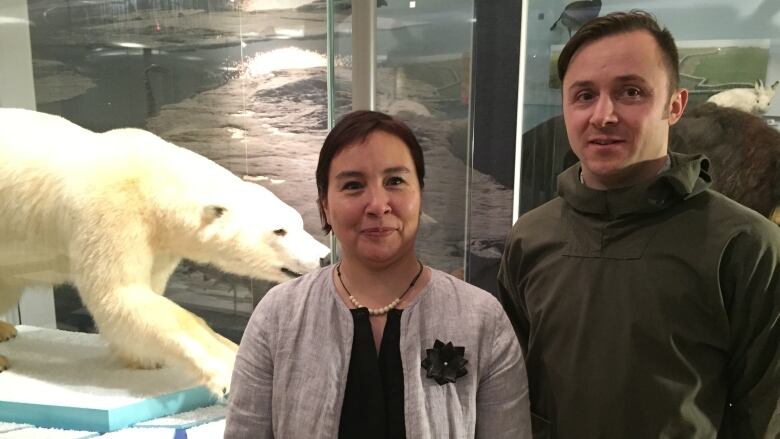QIA negotiator talks Tallurutiup Imanga impact and benefit agreement at oceans conference
Lancaster Sound marine conservation area can't move forward until agreement signed with Inuit

The QikiqtaniInuit Association's negotiators say the process ofcreating an Inuit Impact and Benefit Agreement for what will be the nation's largest marine conservation areawill be precedent-setting.
This August the federal government set the boundaries of TallurutiupImanga, also referred to as Lancaster Sound, covering 110,000 squarekilometres. It lies at the eastern entrance of the Northwest Passage.
SandraInutiq, who has been hired as the chief negotiator for theQIA'sTallurutiupImangaInuit Impact and Benefit Agreement, is at the Canada's Oceans: Towards 2020 conference in Toronto to talk about whatTallurutiupImangais, where it is andthe Inuit perspective on conservation.
"Often people are unaware of Arctic issues and that there are actually people that live up there and that we are very much involved in what's happening with our lands and waters," saidInutiq.
The area is a vital hunting ground for Inuit, who began advocating for protection in the 1960s. Work toward a marineconservation area began in 2009.
The way that negotiations between the federal government and Nunavut occur are unique to the rest of Canada because of the Nunavut Land Claims Agreement, which was signed in 1993 and created the territory of Nunavut in 1999.
The commitment from the federal government and an established boundary, twice the size of Nova Scotia, came in August. But Tallurutiup Imanga will not become an official marine conservation area until an Inuit Impact and Benefit Agreement(IIBA) is ironed out.
"Part of what we agreed to in the land claim agreement is that nothing should really happen to lands and waters unless Inuit are involved in deciding how it's going to be, what the activity is going to be, what's allowable and how it's going to be managed," saidInutiq.
Benefit agreements
StephenWilliamson-Bathory,QIA's director of major projects, said they're looking to define the role that Inuit will have and how decisions will be made about the future of theregion.
An IIBA has to be negotiated before the establishment of any new park or conservation area in Nunavut. It's intended to ensure thatInuit will benefit from its establishment, get infrastructure and resources andwill receive training and employment opportunities.
"For Inuit it's about an opportunity for economic development, it's not protection for the sake of protection of marine mammals and a national interest," saidWilliamson-Bathory.
"I think other Indigenous groups will be looking to see how this one is created for precedence ... there's many opportunities with this conservation area for defining the relationship between Indigenous and the federal government."
A series of community consultations will take place in the new year, led by Inutiq, in the five communities affected by Tallurutiup Imanga to bring their concerns and hopes to the IIBA negotiating table.
The Canada's Oceans: Towards 2020 conference is taking place at the Royal Ontario Museum in TorontoDec. 4-6.












_(720p).jpg)


 OFFICIAL HD MUSIC VIDEO.jpg)
.jpg)



























































































